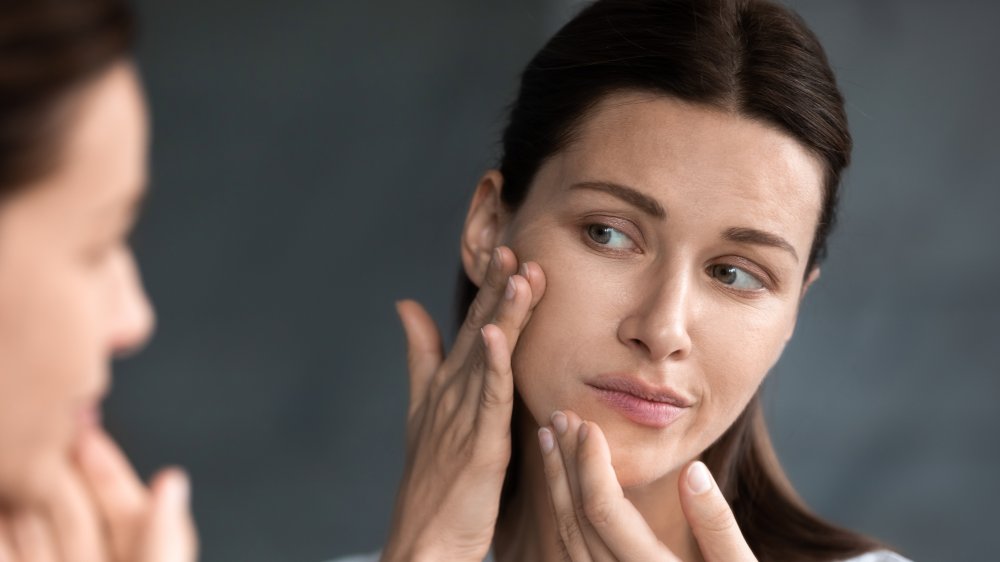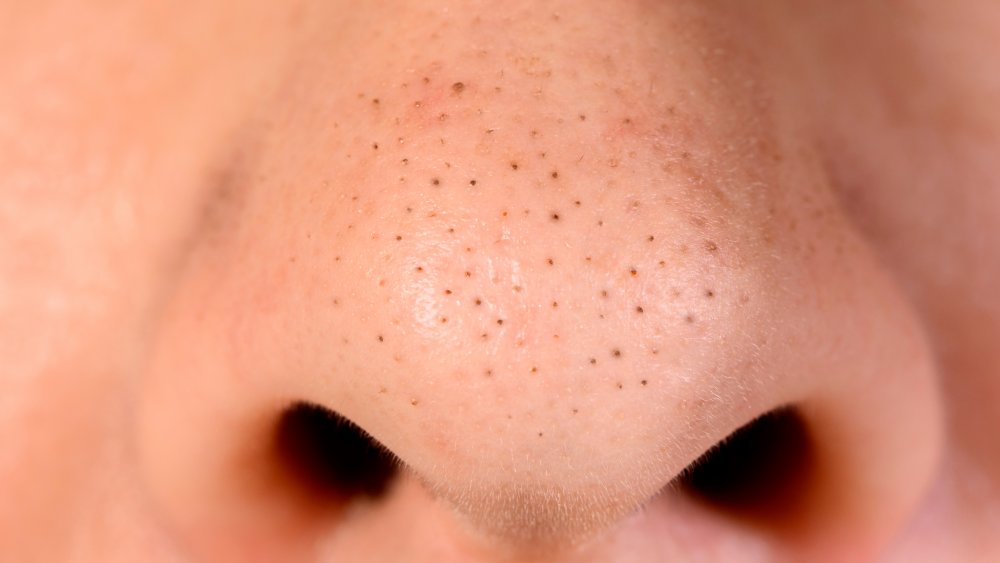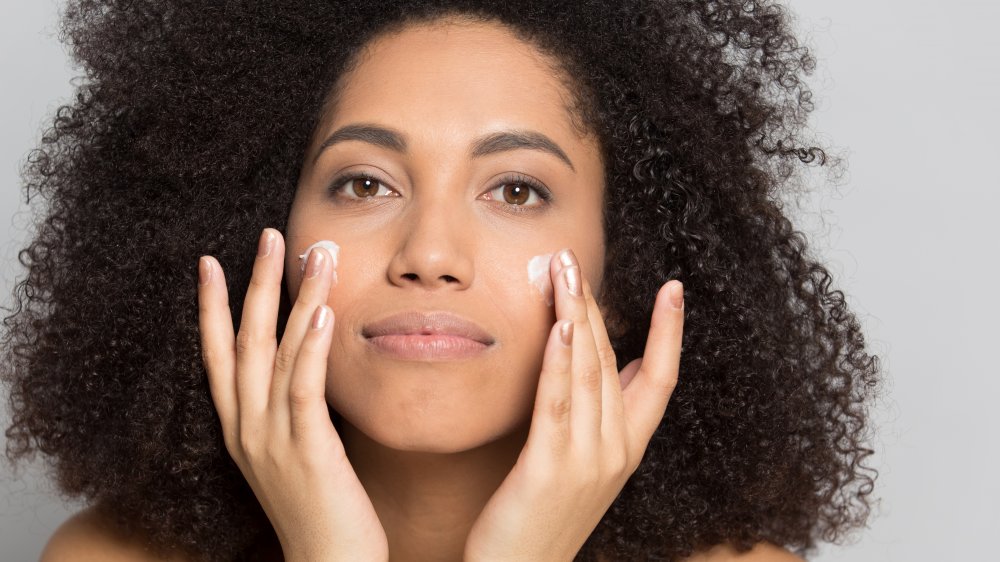The Truth About Comedonal Acne
It never seems to fail: Right before an important meeting or a romantic date night, you look in the mirror and see a row of blackheads sprinkled across your nose, or a pimple starting to bloom on your chin. Comedonal acne — the medical term for the most common form of breakouts — is a fact of life for just about everyone, and it can occur well into adulthood (via Healthline). And while acne isn't caused by eating too much chocolate or not washing your face enough (sorry, Mom!), hormonal changes might be a factor, and stress can make also make a breakout worse, according to the NIH's MedlinePlus site.
Fortunately, understanding what's behind comedonal acne and knowing how to treat it can help keep your skin clear and blemish-free.
Open vs. closed comedones
As the American Skin Association explains, comedonic acne occurs when the small hair follicles on the skin become clogged with skin cell debris, oil and/or bacteria. When the follicles are slightly open (an open comedone, or blackhead), air oxidizes the gunk and turns it dark. A closed comedone is acne within an unopened follicle, which typically looks like a flesh-colored lump. As Clarissa Yang, M.D., chief of dermatology at Tufts Medical Center, explained to Self, closed comedones are different from the white-topped pustules we call "whiteheads." In fact, she adds, trying to open up a closed comedone can lead to inflammation and scarring, so resist the temptation to squeeze if you see one starting to erupt.
In addition to hormonal changes that affect oil production, comedonic acne can be caused and/or made worse by hair products, smoking, sweat, a high-glycemic diet, and good old-fashioned stress, dermatologists explain to Byrdie. Then, of course, there's the acne source unique to 2020: As Northwestern Medicine reports, doctors are seeing an increase in chin breakouts due to mask-wearing. The humidity that builds up under face coverings is a breeding ground for bacteria.
How to treat comedonic acne
When you first notice a closed comedone, you may be able to reduce the swelling by applying ice, suggests WebMD. Using topical OTC acne products containing benzoyl peroxide, salicylic acid, or resorcinol can also help get the comedone under control. When choosing makeup, look for the term "non-comedogenic," which indicates that the ingredients won't clog your pores.
To keep comedonic acne from recurring, the American Academy of Dermatology has a number of tips. Among them: Wash your face gently twice a day (skip washcloths and loofahs, which can irritate skin); avoid facial products containing alcohol; shampoo daily if you have oily hair; and stay away from tanning beds and long sessions in the sun. And if your acne doesn't clear up or worsens after a few weeks, consult a dermatologist.


